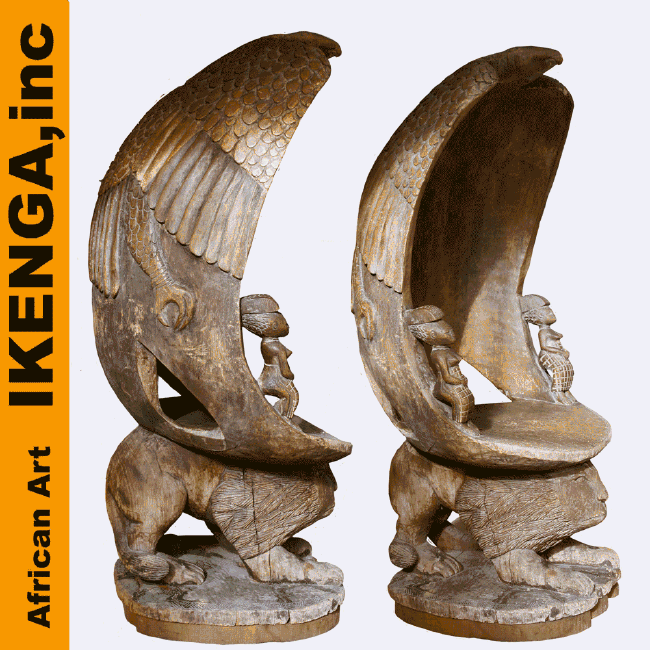





Ashanti, Fante, Aowin, Anje, Akye, Abron./ Ghana, Cote d’Ivoire
The Portuguese introduced the ‘ elbow chair’ when they arrived in West Africa in the 15th century. Such chairs were soon perceived by the Africans as the ultimate sign of power, authority, and prestige, and they adopted them into their own culture. Stools and thrones became emblems of political, judicial, and social leadership, and power, the most important of the chief’s regalia and the sine qua non of his office.
Many bloody wars were fought over theses political symbols of power, as they lend legitimacy to the owner or conqueror to rule.
The Akan are a group of ethnicities made up of the Asante/Ashanti, the Fante, the Aowin, the Anyi, the Akye, the Abron, and a few other small ethnic groups.
They all migrated from the former Gold-Coast, renamed Ghana in 1957.
These groups go back to the first great empire of West Africa, from which the majority of the population claim to originate. The Anyi and the Abron settled in the south-east of Ivory Coast.





